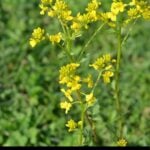Barbarea vulgaris – Wintercress or Yellow Rocket
This post may contain affiliate links. Read my full disclosure here.
Barbarea vulgaris, also know as wintercress or yellow rocket, is one of the earliest windflowers to bloom in spring. Though not welcome in the farm fields where it often appears, we can still use this plant for food and medicine.
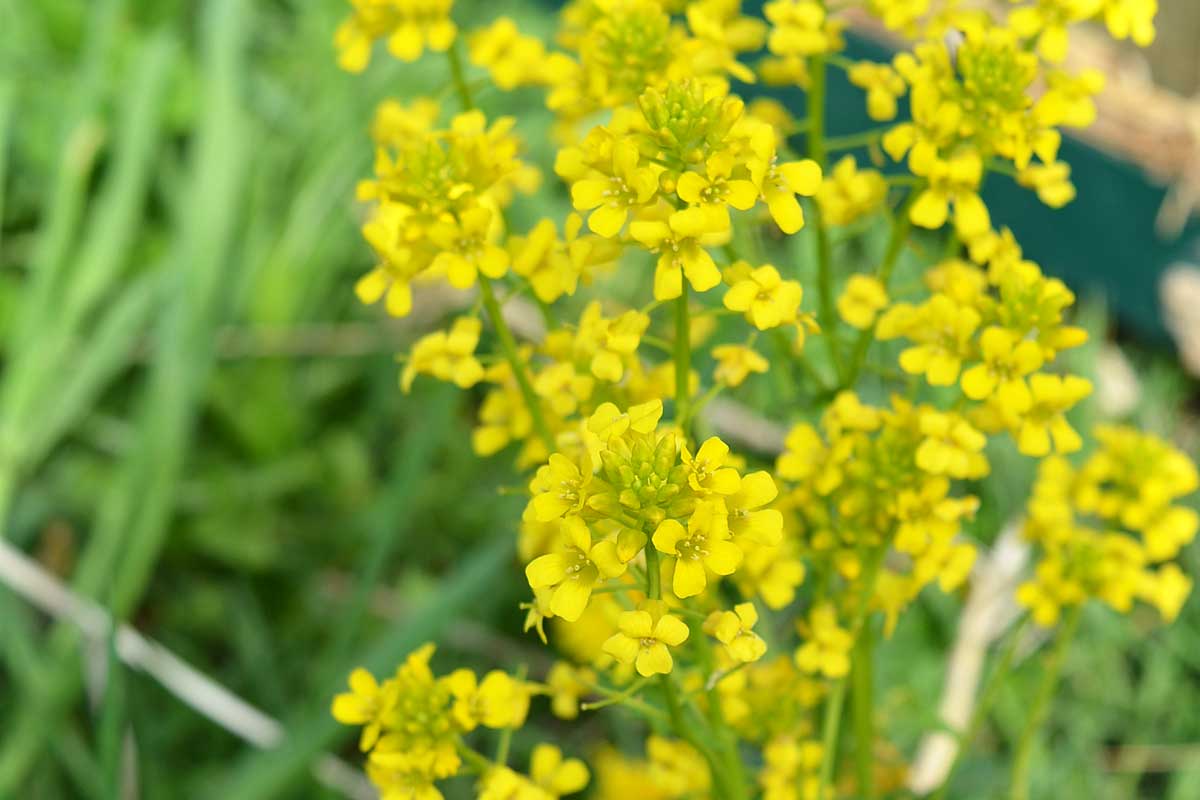
One year when I was a little girl and I thought I might be able to pull all the yellow rocket out of one of our small fields. My brother bet me that I couldn’t, and he won that bet. This plant loves to spread, so it’s best to manage it by adjusting the soil, which I’ll get to in a bit.
Other names for Barbarea vulgaris include:
- bittercress
- common cress
- rocket cress
- Indian posey
- Land cress
- St. Barbara herb
- scurvy cress
- upland cress
- yellow rocketcress
Table of contents
Range and Identification of Barbarea vulgaris
Although native to Asia and Europe, yellow rocket is now naturalized in much of North America. It thrives in disturbed soils, and preferring well drained soils and full sun. You’ll find the tastiest plants in rich, moist soils, but it pops up all over, from gardens to railroad tracks.
Barbarea vulgaris is a biennial, requiring two growing seasons to complete its life cycle. It forms a basal rosette from late summer through late winter, blooming in early spring. The dark green basal leaves are up to 9 inches (23 cm) long. The leaves are hairless, unlike some other brassica species.
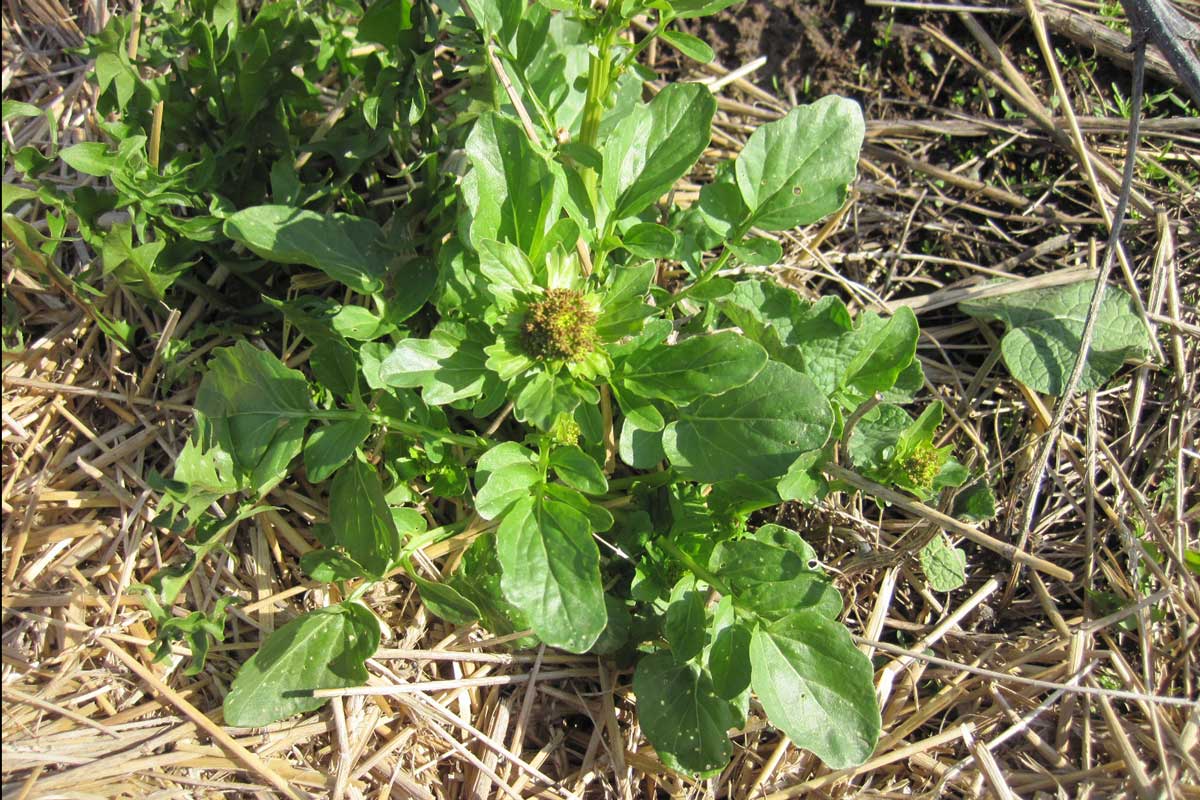
During the first growing season it produces foliage, and in its second year it flowers and sets seed. The flower stalks reach from 1 to 2 feet tall. Leaves alternate along the stalk, and are coarsely toothed and roughly club-shaped. Stalk leaves are 3-5 inches long, and the higher ones tend to clasp the stem.
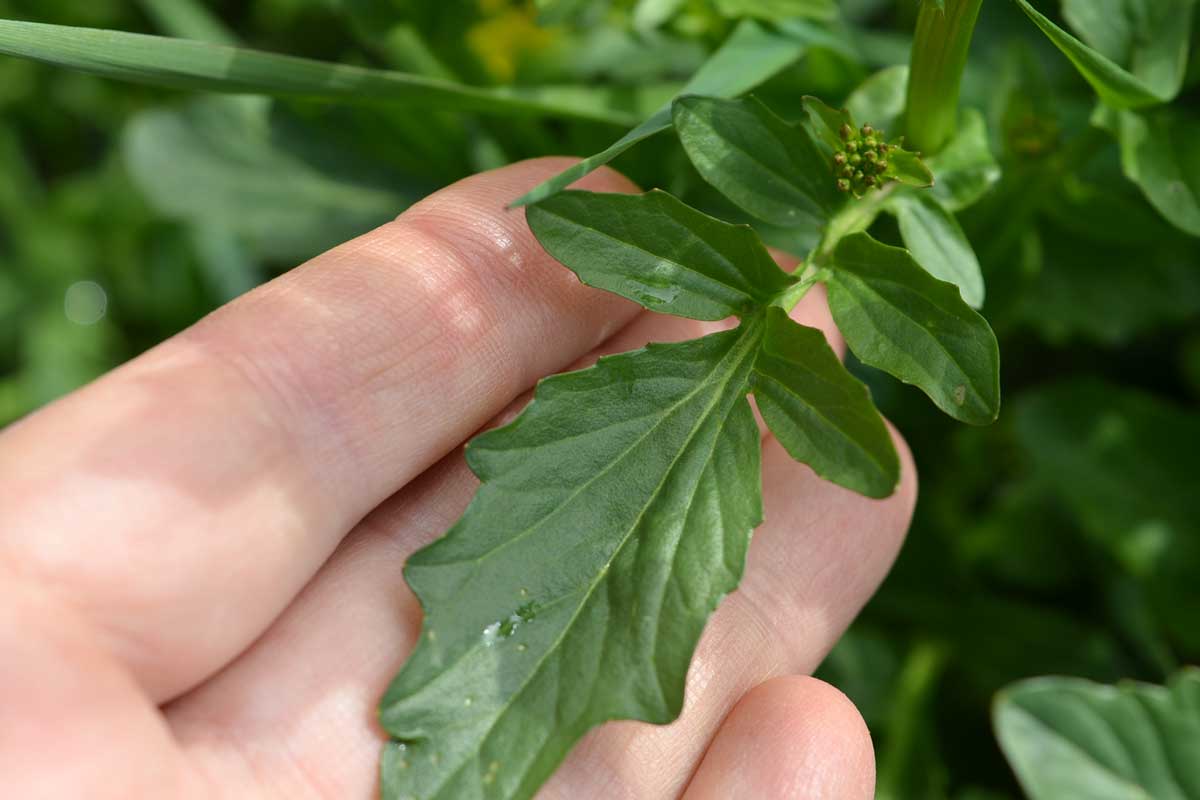
Flowers have four yellow petals arranged in a cross shape, like other members of the mustard family. They grow in clusters near the top of the plant and are 1/4 ” (0.6 cm) wide. It’s not unusual in our area to see fields filled with the yellow blooms in early spring.
Dame’s Rocket, Hesperis matronalis, is another wild member of the mustard family.
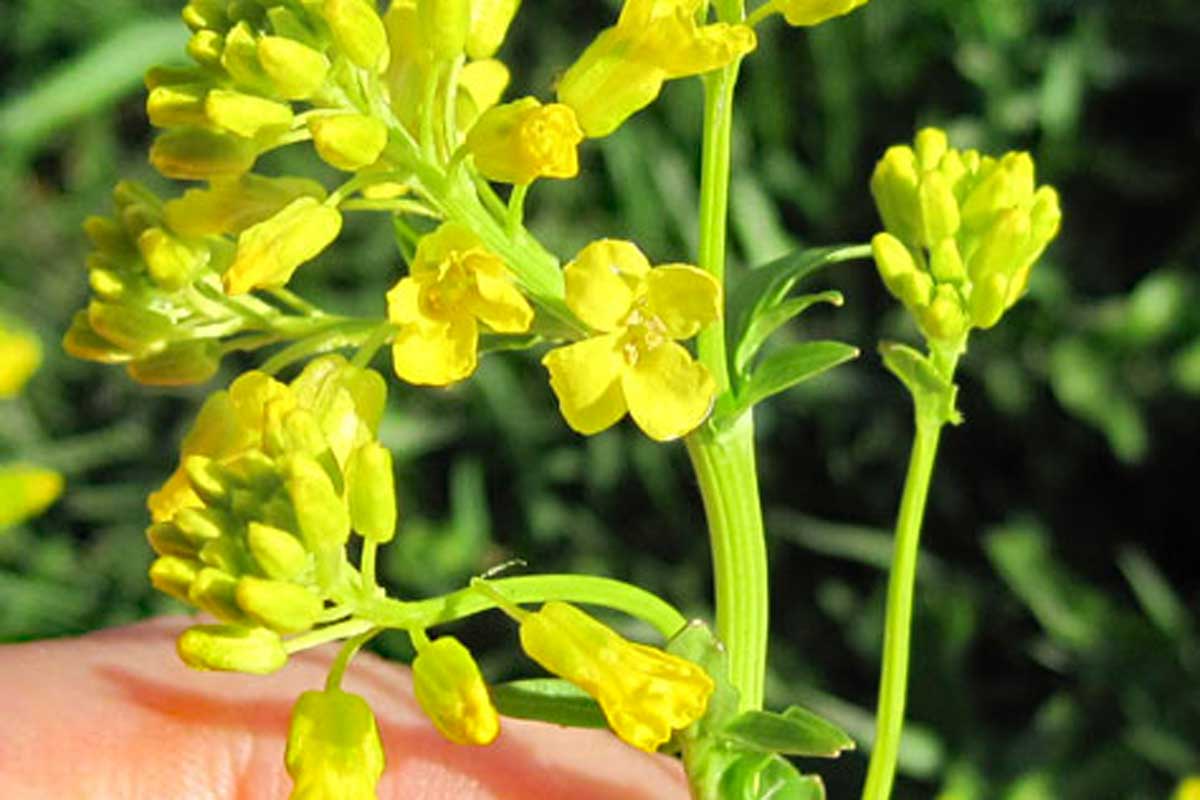
After the blossoms fade, the plants forms slim, green seed pods. These ripen and fill with small, round seeds that have a peppery flavor.
Eating Wintercress
Avoid harvesting from areas treated with herbicides or other chemicals. Before the plant blossoms in spring or after the first fall frosts, the young leaves are edible as salad greens, although bitter. Once it blossoms, the leaves get really bitter.
Yellow rocket isn’t poisonous, but the bitter compounds can cause stomach upset if consumed in large amounts. Cooking or fermentation help break these down and make it easier on the stomach. Use the leaves similar to spinach.
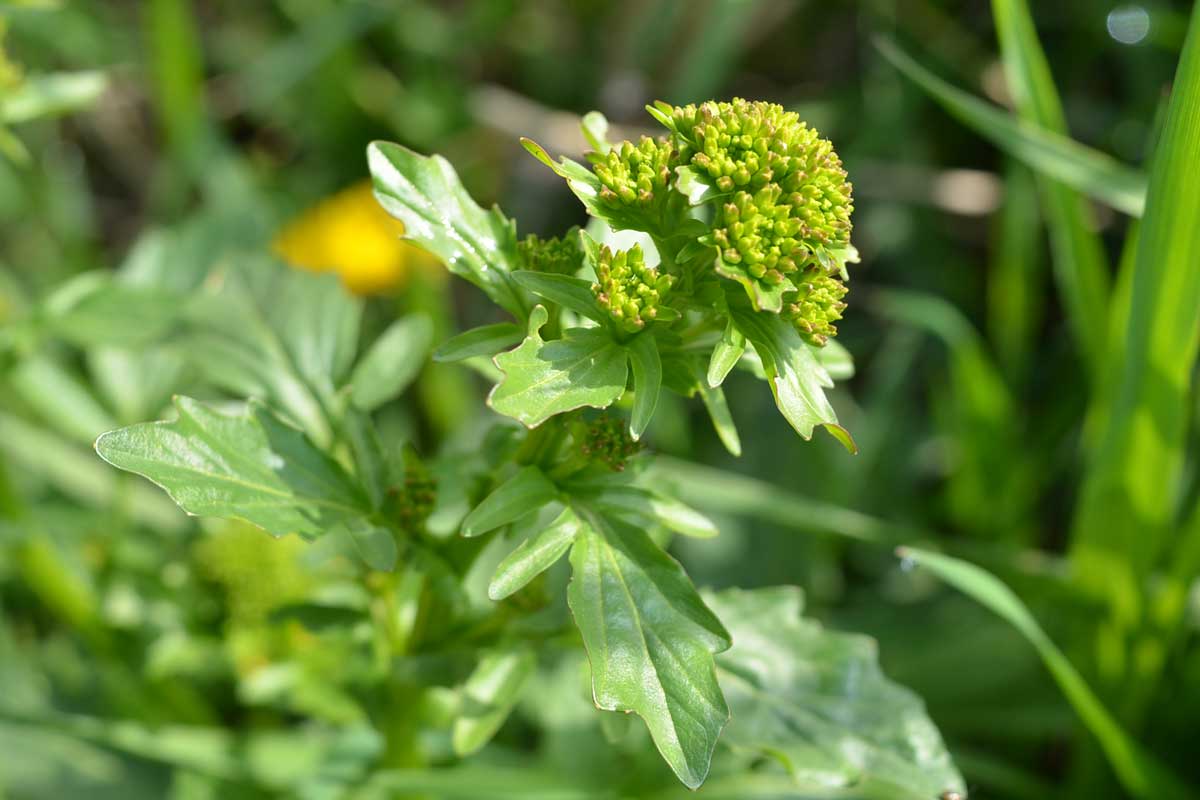
Would you like to save this?
Cook unopened blossoms (buds) in a manner similar to broccoli. The plant is rich in vitamins C and A. (Thus the name “scurvy plant”.) I tried some of the unopened buds raw, and they do taste a bit like broccoli – really strong, stinky broccoli. I highly recommend cooking them!
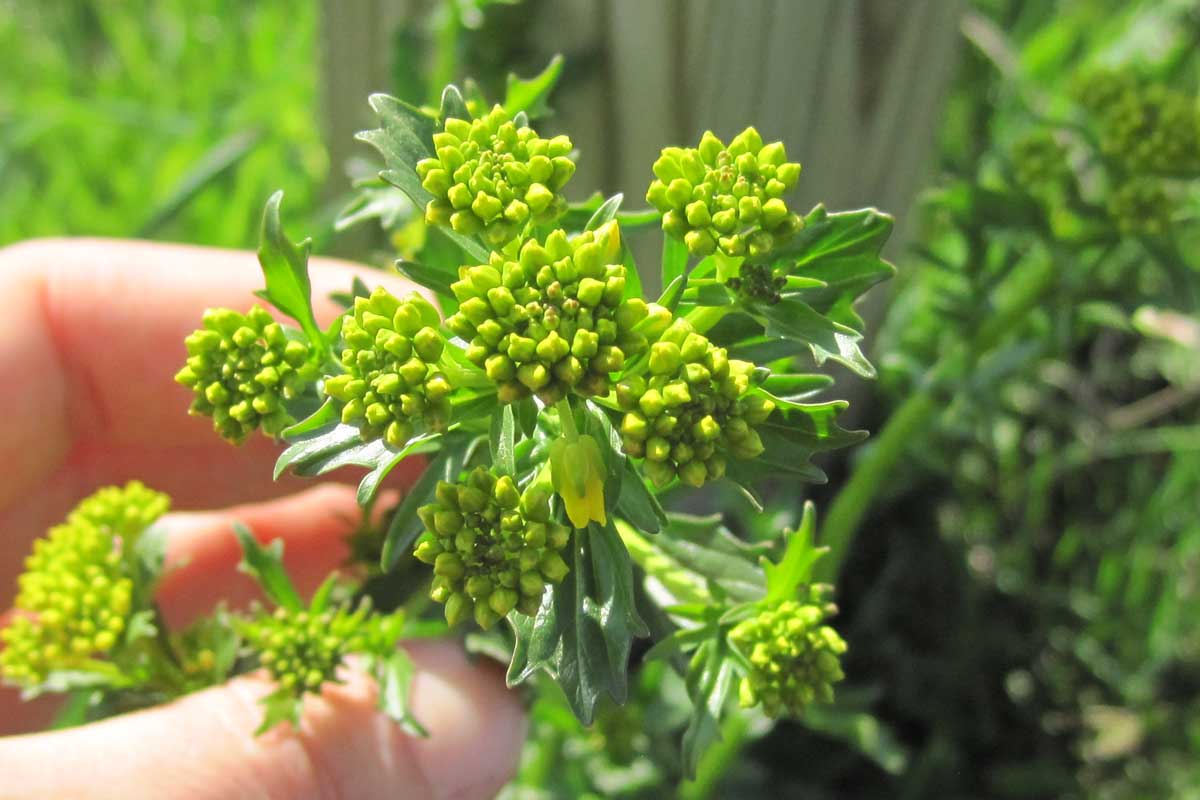
Add the flowers to salads, or dry them and and use them in herbal tea. The seeds are edible, and have a peppery flavor, as noted above.
Medicinal Uses of Barbarea vulgaris
As a member of the brassica family, Barbarea vulgaris contains indole phytoalexins. These compounds have anti-cancer and antifungal properties. The bitter greens have a history of use as an appetite stimulant and digestive aid.
Cherokee Indians used a tea brewed from the aerial parts as a blood purifier. Europeans used poulticed leaves to treat wounds. Wintercress also works as a mild cough suppressor, and natural diuretic.
Always exercise caution when using any wild plants, and make sure that you have a correct identification. Allergic reactions and drug interactions are rare, but not impossible.
Wildlife Uses
Barbarea vulgaris flowers are important as an early season source of nectar and pollen for bees and some butterflies. I always see pollinators humming around the plants in our yard. Birds such as doves and grosbeaks eat the seeds, and deer nosh on the greens.
Yellow Rocket Control
The book, “Weeds: Control Without Poisons” notes that Barbarea vulgaris show up when soil is low in calcium and very low in phosphate. Work to correct these deficiencies with organic fertilizers such as gypsum or calcium vinegar extractions.
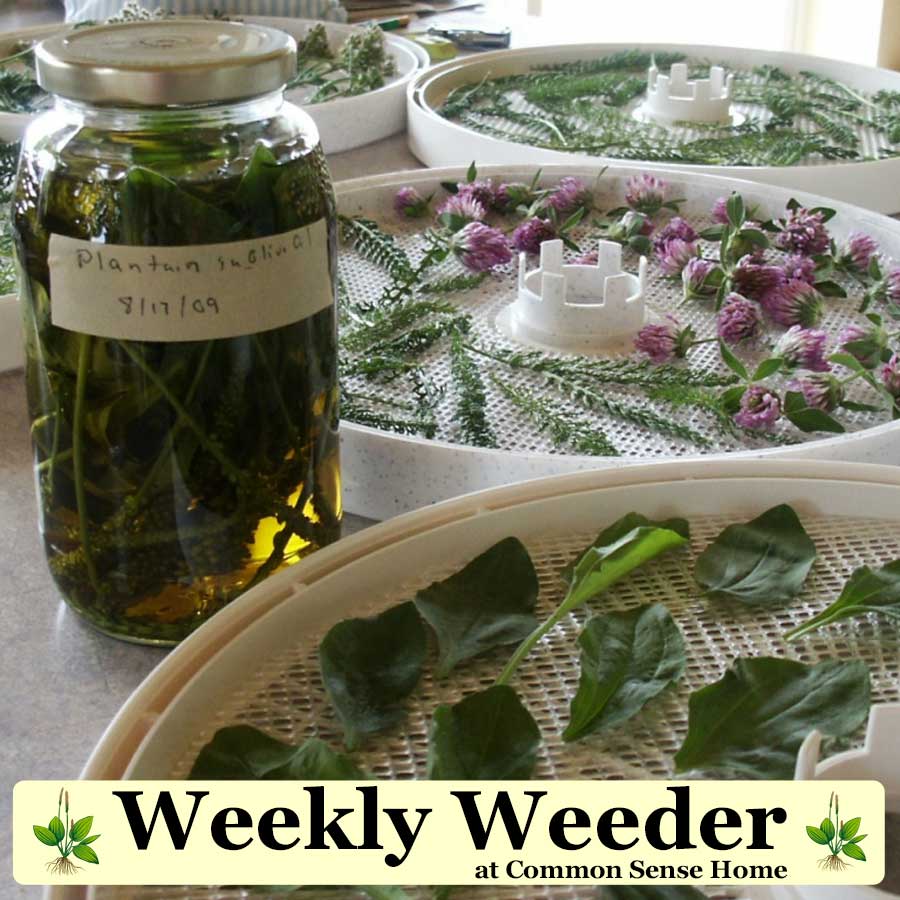
The Weekly Weeder Series
This article is part of the Weekly Weeder series, which shares how to use wild plants for food, medicine, and more.
Other popular articles in the series include:
- Harvesting and Using Dandelion Roots
- Sweet & Aromatic Pine Cone Jam Recipe
- Foraging & Wildcrafting Books You Don’t Want to Miss

This article is written by Laurie Neverman. Laurie was raised on a small dairy farm in northwest Wisconsin, where she gathered wildflowers from the woods and pastures. She and her family now live in northeast Wisconsin, where they combine intentional plantings and semi-wild areas. Every season is a new opportunity to learn more about working with wild plants.
Originally posted in 2012, last updated in 2025.

